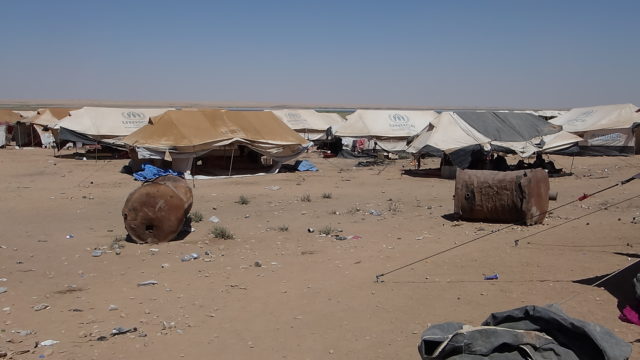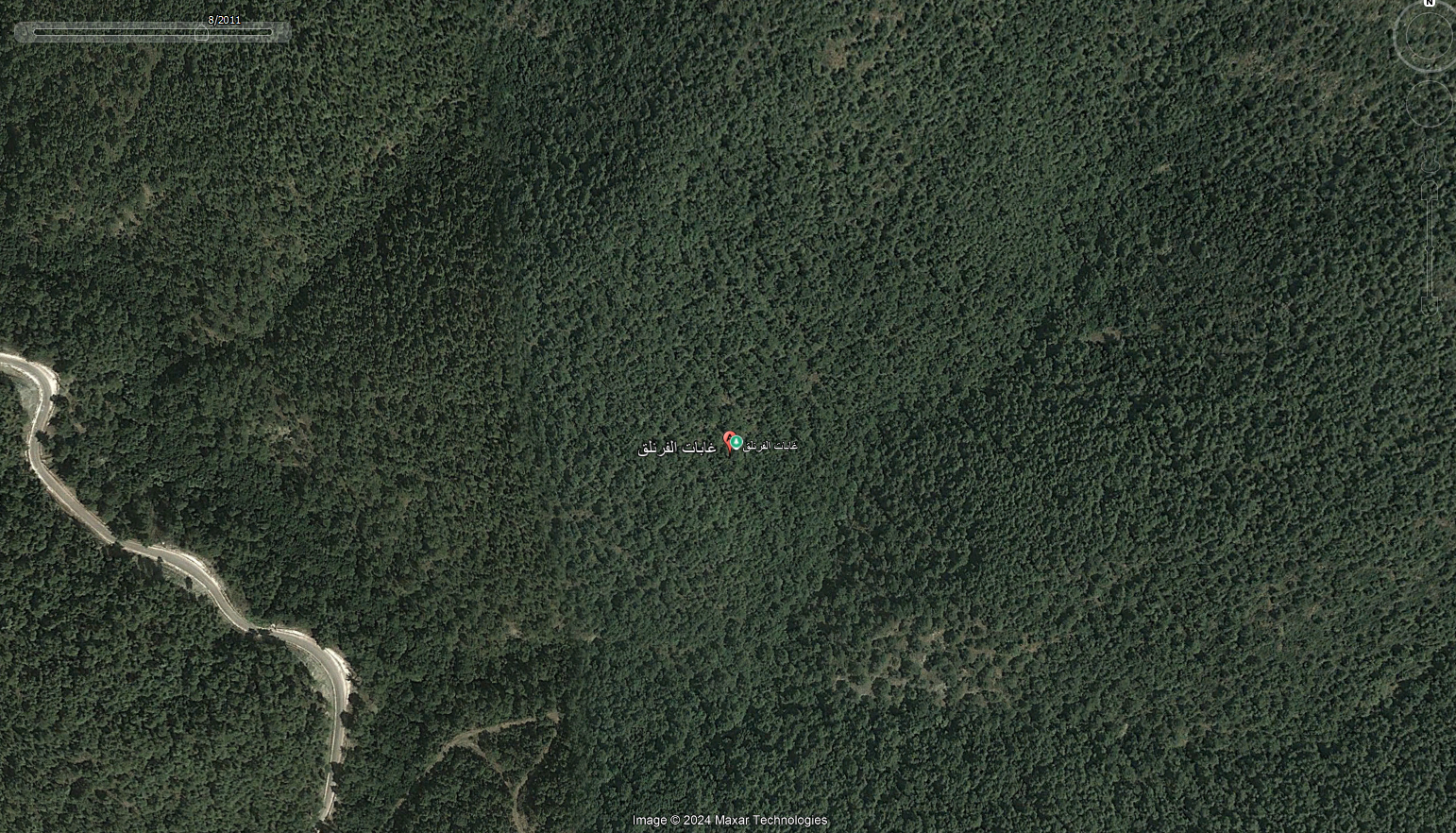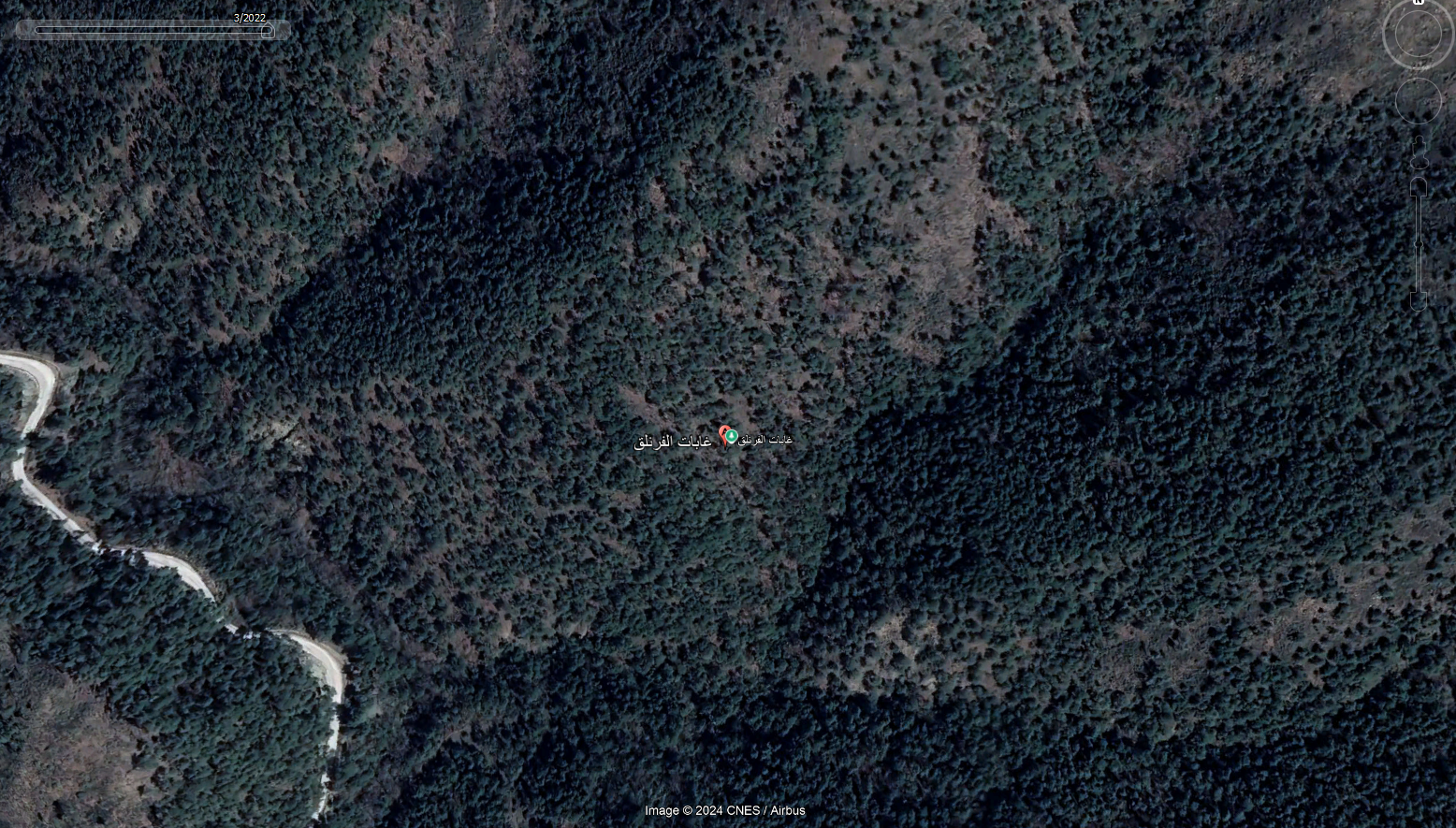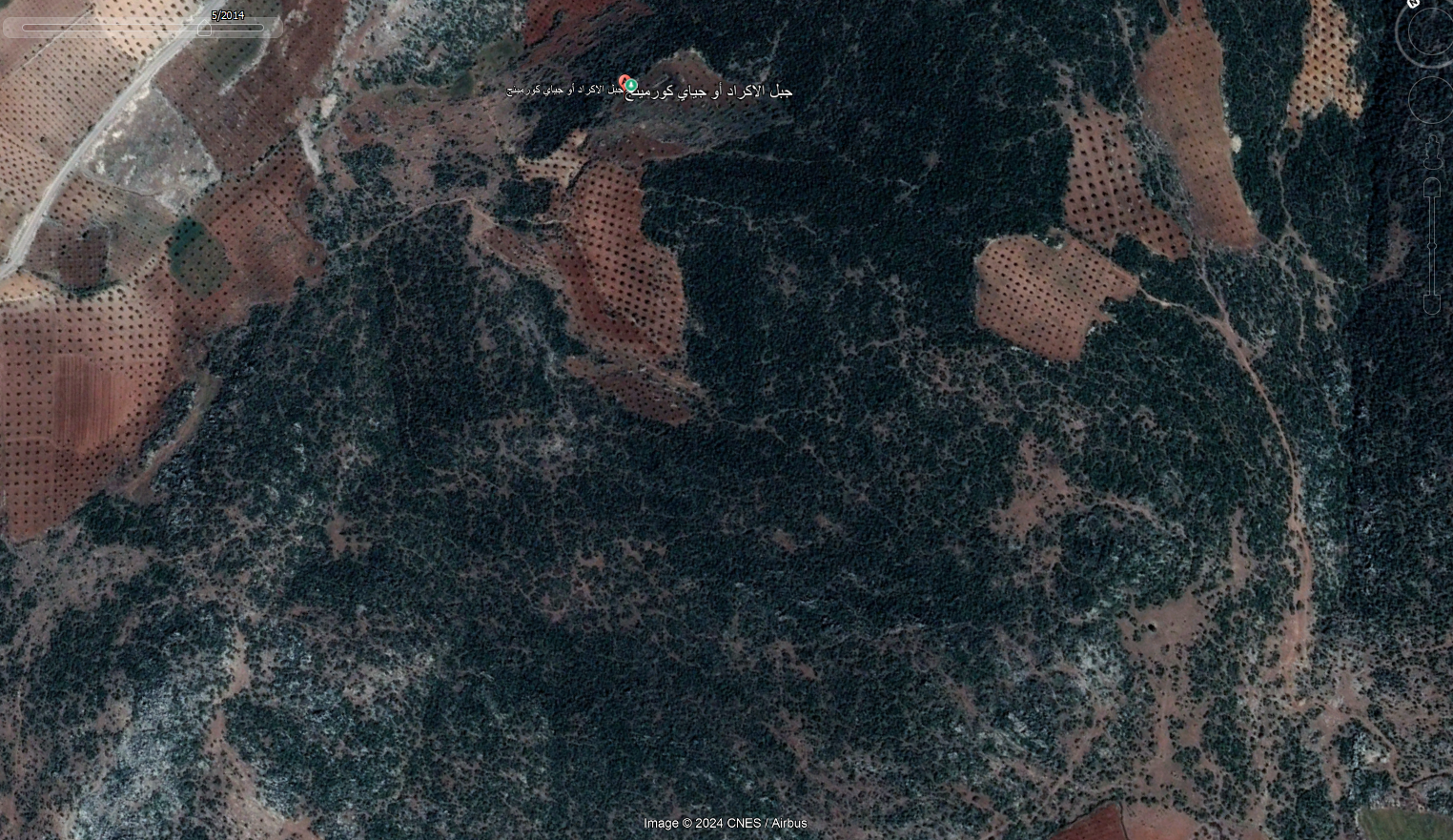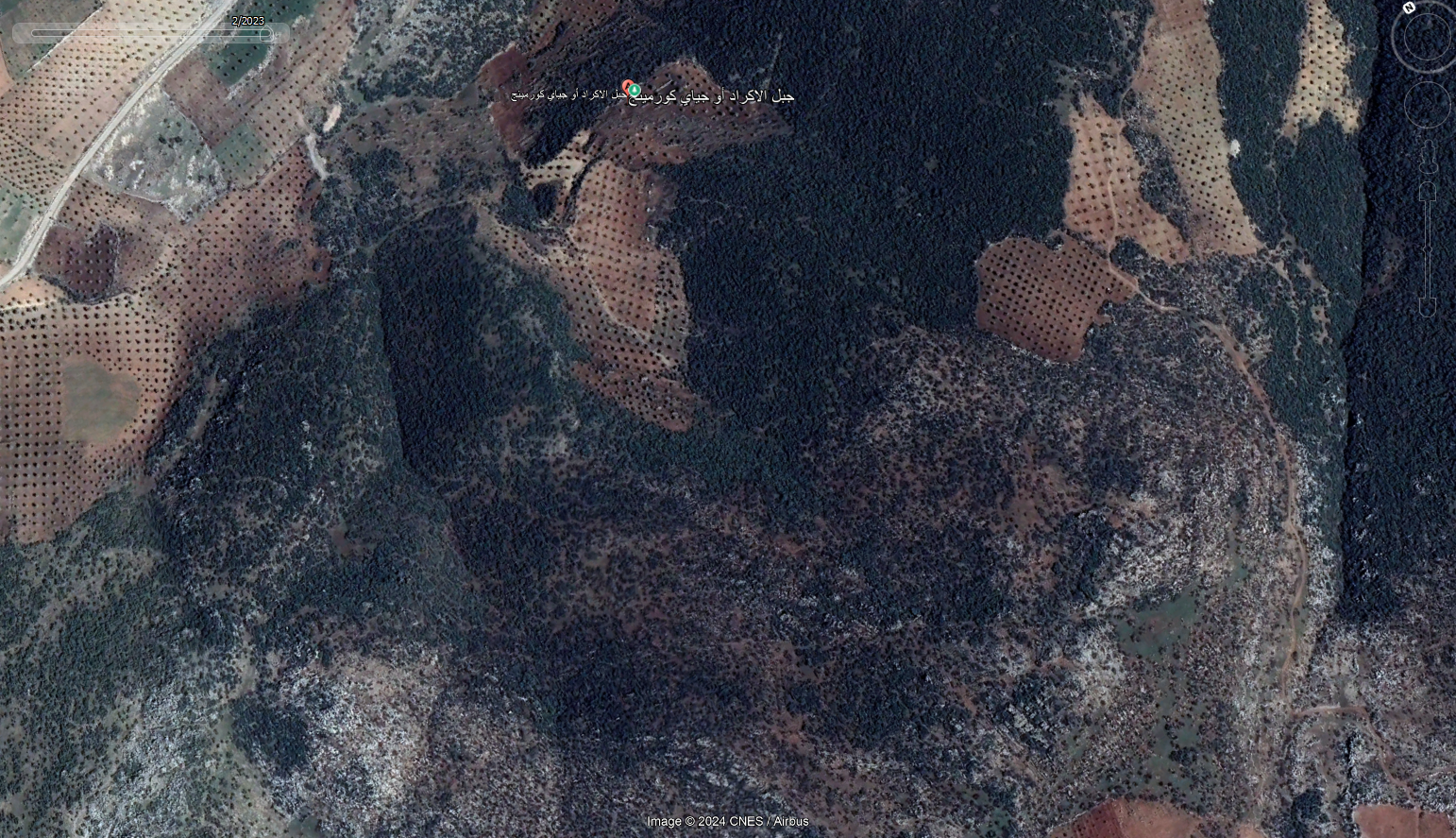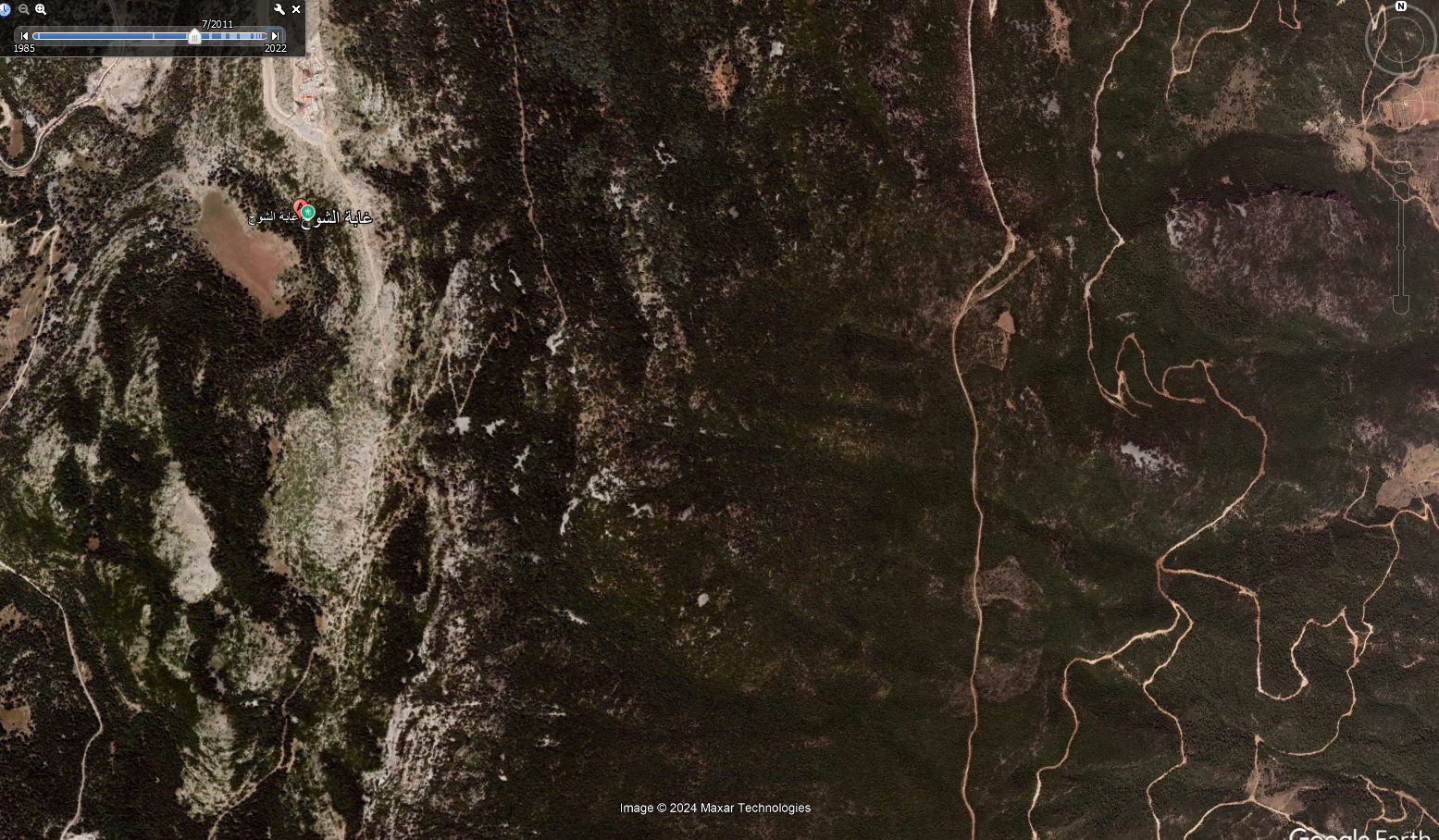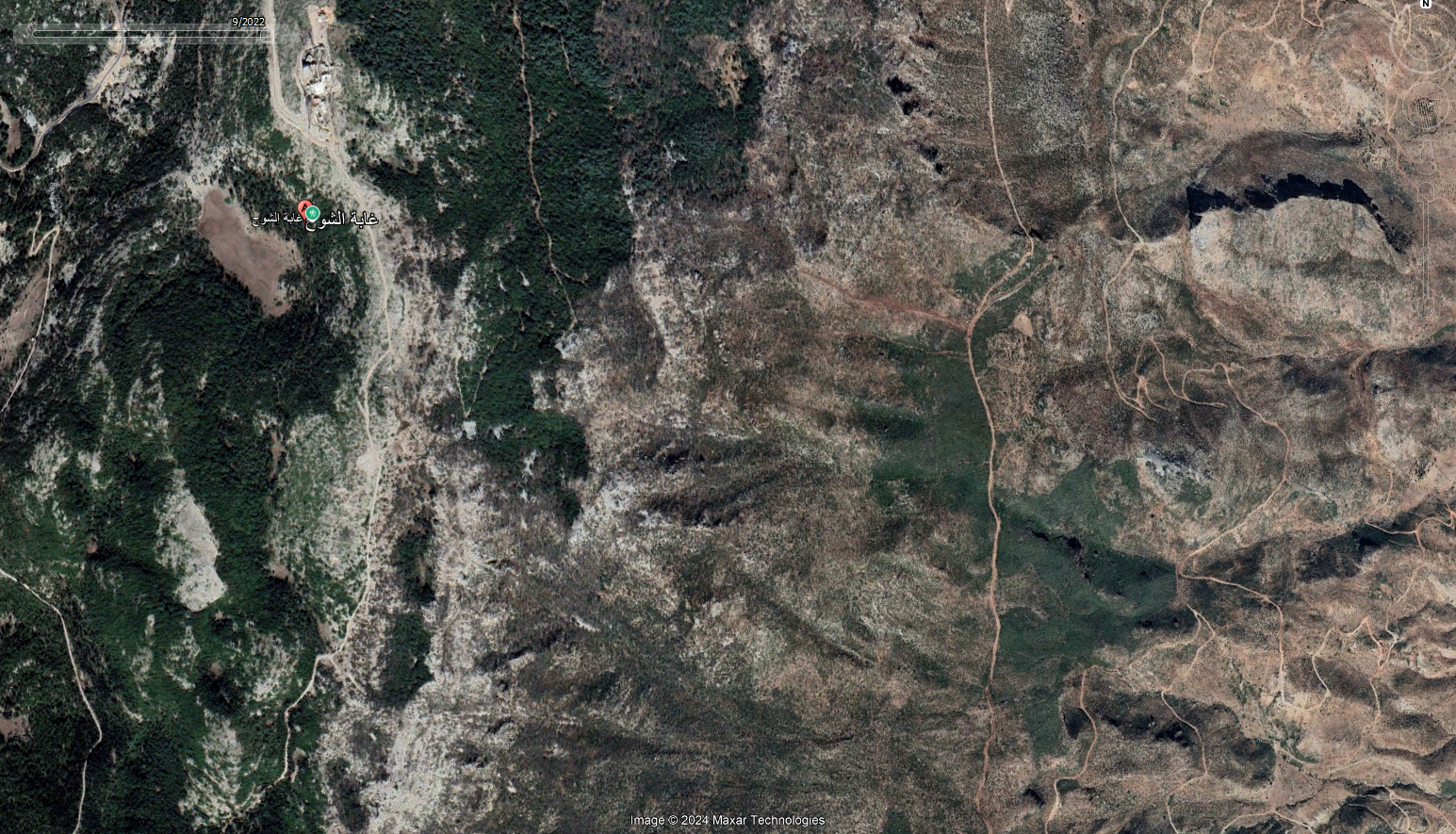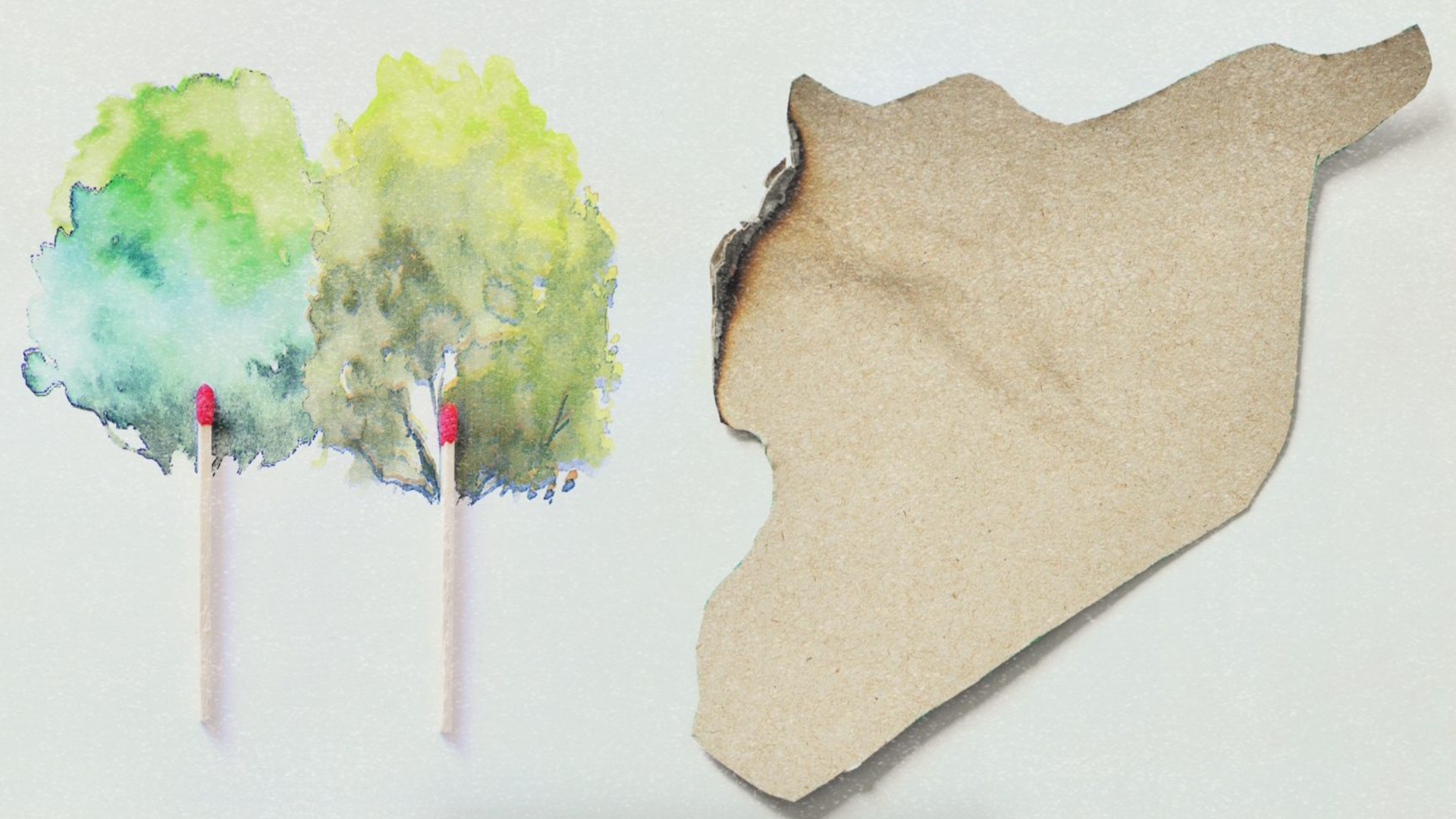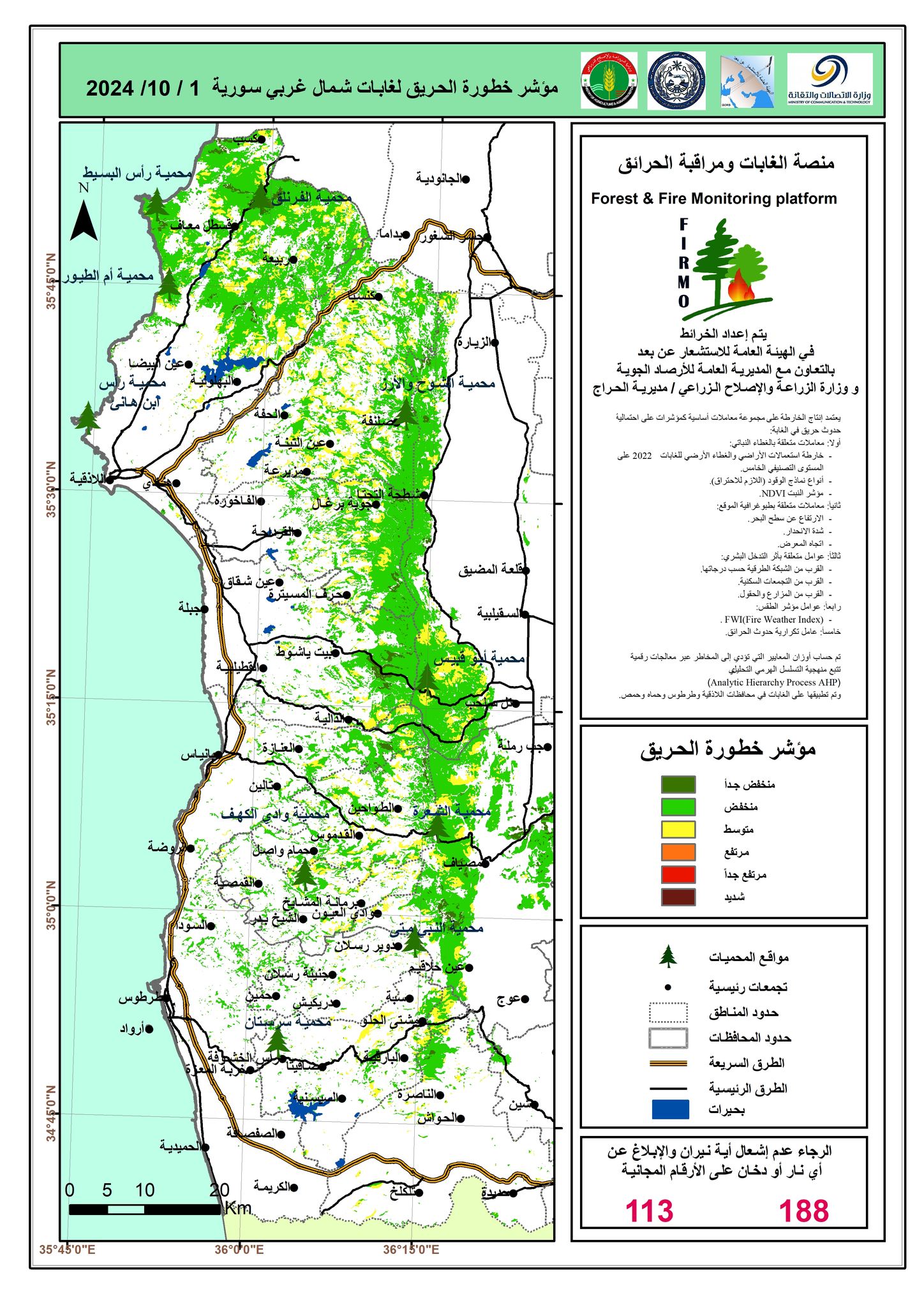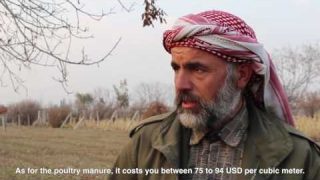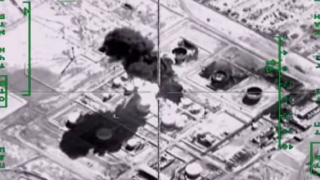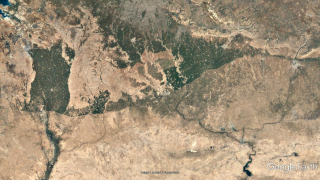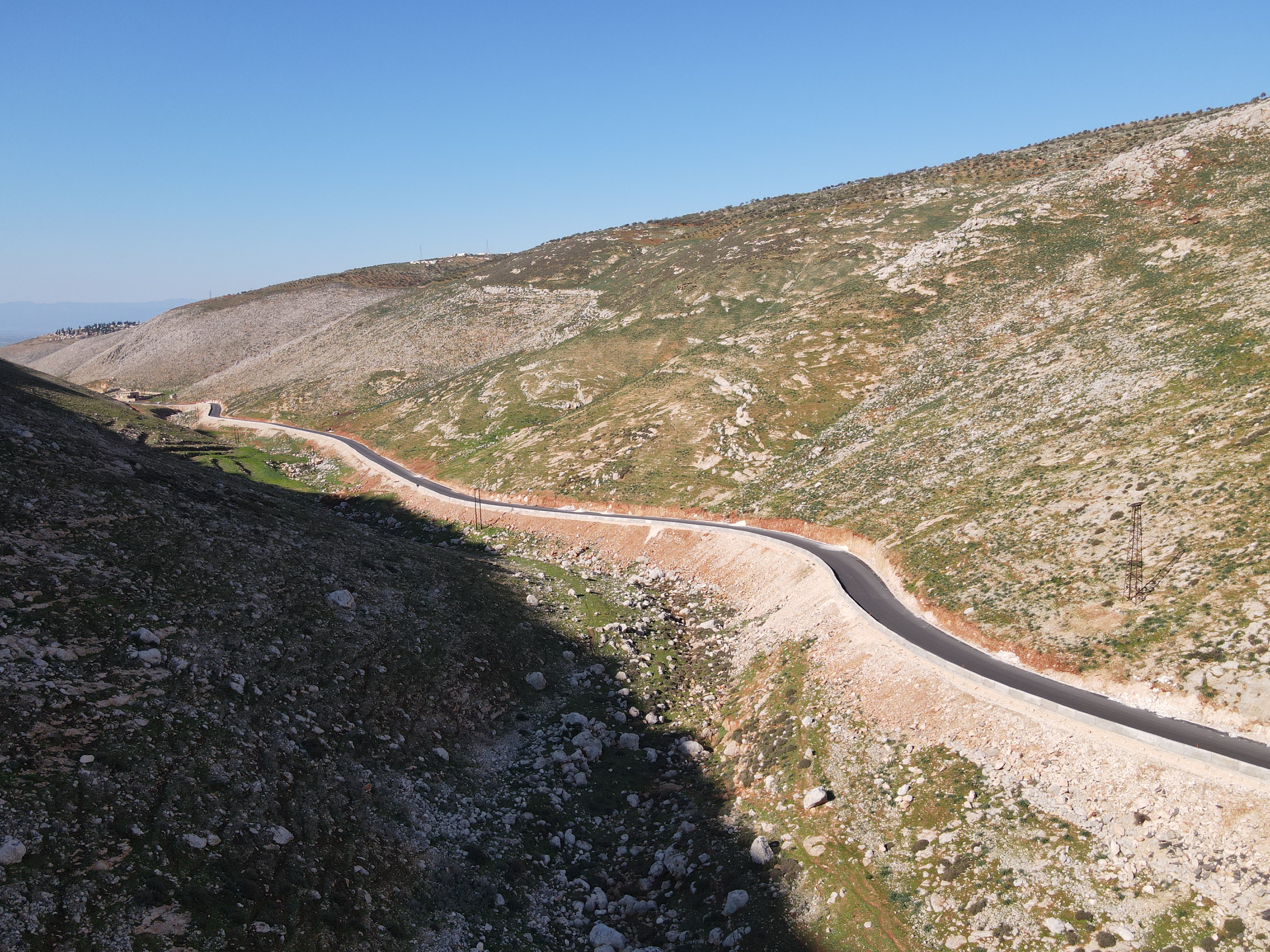The diverse and abundant vegetation on the Syrian coast, particularly in the provinces of Latakia and Tartous along Syria's Mediterranean coastal borders, is facing significant challenges due to climate change and over a decade of war. Both have left lasting damage that will be difficult to mitigate without national comprehensive development and agricultural programs implemented at a national level.
The current political transition in the country has further exacerbated the situation. The near-total lack of heating fuel has led to the logging of trees in the urban outskirts and rural forest areas, to be used as a fuel source. To date, the new administration has made no statements addressing this issue.
International data reveals that green spaces in Syria have declined by approximately 30% in the past decade, a reality also confirmed by satellite imagery. This starkly illustrates the environmental disaster affecting the Syrian coast. The decline is attributed to the burning, bulldozing, and cutting of trees and vegetation, which not only harm biodiversity but also degrades air and water quality, reducing the possibility of ecological recovery.
The impact of these destructive practices has been compounded by noticeable shifts in rainfall patterns and a significant rises in temperatures due to anthropomorphic-induced climate change. Over recent years, temperatures on the Syrian coast have increased by about 1.5 degrees, placing additional stress on vegetation, particularly trees, which struggle to adapt to the changing climate. This has further accelerated the decline in vegetation cover and diminished its ability to regenerate naturally, leaving a profound negative impact on local ecosystems.
In recent years, the Syrian coast has experienced an increase in the intensity of climatic events, including storms and hurricanes. Notably, the 2023 storm caused extensive destruction to vegetation cover, particularly in agricultural lands and nature reserves. Strong winds uprooted trees and devastated natural habitats in areas such as Baniyas and Al-Muntar in Tartous and the Blue Beach in Latakia. Additionally, the coastal mountains suffered damage, the full extent of which has yet to be accurately assessed.
Displacement and the Environment: Lessons from Syria and the Middle East
17 July 2018
Forest Fires
Climate change has played a significant role in the depletion and reduction of forests on the Syrian coast. However, the most devastating environmental events affecting these forests are fires, largely attributed to direct human activity.
Fires have impacted more than 80 sites along the Syrian coast, spanning from the western mountains of Homs (Mashta al-Helou) to the northern areas of al-Basit (Jabal Chalma, Kasab, and al-Badrousiya). These incidents, occurring during the two dry months of October and November, have resulted in the loss of thousands of olive and apple trees. According to the Homs Agriculture Directorate, the fires that recently broke out in the western countryside of the governorate affected approximately 4,741 agricultural dunams (1 dunam = 0.001 square kilometers) and 20 forested areas. This estimate was provided by the Homs Agriculture Director in a statement to the local Sham FM radio station.
Forest species, which make up the remaining primary vegetation cover, such as the conifers in the Kasab area north of Latakia, were also burned. According to local agricultural directorates, these fires resulted in the loss of various living organisms from their natural habitats, including birds, turtles, cats, and foxes, as well as insects such as bees, wasps, and dragonflies.
The fires have long-term effects on Syria's vegetation cover. Continuous changes to temperature and weather conditions, resulting from fires and human activities, may lead to permanent changes in the vegetation composition of the region, potentially transforming the ecosystem entirely. This, in turn, could alter the conditions for human settlements in the area, forcing some communities to migrate. Such displacement has already occurred in several villages in the Kasab area, with residents relocating to the city of Latakia, according to local sources.
Geography of Wasted Forests
Syria is a country poor in natural forests, and has witnessed a decrease in the area of forests over the past century, from about a third of the country's area at the beginning of the twentieth century to approximately 2.8% in 2012. The reduction can be attributed to various factors, including the aforementioned burning and logging of trees, as well as overgrazing, population growth, and urban expansion, according to international sources.
Official sources estimate that the area of forests in Syria in 2012 amounted to 503,000 hectares (1 hectare = 0.01 square kilometers), distributed over 233,000 hectares of natural forests and mountain forests, and 270,000 hectares of artificial afforestation. Meanwhile, the Ministry of Agriculture announced a number of natural reserves, with an area of about 167,000 hectares (36% of the total forest area) by 2012. Moreover, 76% of the forested lands are located in the coastal mountains due to cooler temperatures, rainfall, and the region’s diverse mountainous nature.
Today, according to the International Fire Observatory, the remaining areas of these forests do not exceed 0.62% of the forest area reported in 2012, indicating a loss of no less than two-thirds.
Given the reality that the remaining 0.62% is still exposed to cutting, burning, and bulldozing under various pretexts—some logical, such as the absence of heating oil, and others arising from a lack of awareness about the importance of forests and groves—unconventional thinking seems to be the only solution to break this ongoing cycle that has persisted since 2011.
One possible approach is to innovate new methods, such as collaborating with local communities and granting them partial authority over forest care. This could be achieved through joint development programs involving the people, the government, and civil society organizations.
Additional Problems
There are challenges that may hinder efforts to invest in protecting and rehabilitating Syrian vegetation. These include the ongoing conflicts and unstable conditions in the country since 2011, as well as the weak efficiency of the agencies responsible for forest protection.
Traditional methods of forest monitoring are expensive, require large resources, and are often subject to waste and theft. These methods have frequently proven ineffective in detecting or preventing forest fires when they occur, particularly in the face of timber and charcoal gangs supported by security and military forces during the control of the former regime.
Traditional methods of forest monitoring are expensive, require large resources, and are often subject to waste and theft. These methods have frequently proven ineffective in detecting or preventing forest fires when they occur, particularly in the face of timber and charcoal gangs supported by security and military forces during the control of the former regime.
The reasons for the difficulty in investing in anti-forest fire measures in Syria include the lack of clear, publicly announced, and integrated strategies for forest management, and the weakness of such strategies, which rely on traditional management practices of the former regime. This results in efforts not being properly directed toward preventing fires and rehabilitating affected areas, leading to wasted efforts by individuals invested in this sector.
Additionally, administrative chaos and corruption in the public sector in Syria exacerbates the problem, as financial resources were squandered on ineffective projects or allocated for purposes unrelated to forest protection (for example, a traffic tunnel in the capital does not address the congestion issue, yet billions were spent on it). Consequently, the absence of a strategic vision and coordination among the relevant parties further complicated investment efforts in forest protection, exacerbating the damage caused by fires.
Impact on Reserves
Latakia includes a number of nature reserves that are home to rare species of plants and animals, including the "Jabal al-Akrad" Reserve and the "Al-Hamidiyah" Reserve, both of which host a variety of plant and animal species. However, these reserves face significant challenges that have contributed to their deterioration, both in quantity and diversity of species, in recent years.
This deterioration is due to several factors, including the significant increase in urban expansion, as well as industrial pollution from factories and agricultural activities. The lack of proper care and insufficient local and national attention to these reserves has further exacerbated the situation.
As a result, the deterioration of reserves in Latakia has led to the extinction of many local species, threatening the environmental balance in the city and diminishing the ability of ecosystems to recover.
War on The Forests of The Syrian Coast
06 June 2019
As Latakia is an agricultural city, many local residents rely on the natural resources of the reserves for their livelihood. The deterioration of these resources has led to increased poverty rates among these residents.
Armed conflicts have also caused unprecedented environmental destruction. The prolonged war in Syria has devastated nature reserves and forests, contributing to the worsening crisis of deforestation. According to testimonies from local residents, military operations and clashes have set fire to forests, resulting in the loss of unique plant species.
Areas that experience ongoing conflicts in Latakia, especially in the countryside are evidence of how the conflicts across the nation have impacted ecosystems and vegetation.
According to a report by the United Nations Environment Program, the armed conflicts in Syria have resulted in significant environmental degradation, with lands being exposed to explosions, pollution, and other war-related effects.
A study published in the journal Environmental Science Policy indicates that conflicts are causing the unsustainable depletion of natural resources, threatening biodiversity, and reducing the ability of ecosystems to recover. The war has also displaced many people from their original areas, affecting traditional agricultural practices. This displacement has left lands unattended, leading to the decline of agricultural areas and exposing them to fires and vandalism.
Additionally, armed conflicts clearly contribute to the increased risk of fires, whether due to military clashes or neglect resulting from displacement.
Alongside the need to increase effective local initiatives, there is an urgent need to raise awareness about the importance of preserving the environment. Clear strategies must be developed, such as cooperation between the international community and local Syrian communities to protect what remains of the vegetation cover. Environmental education and awareness are essential components of these efforts.
This means that various institutions are responsible for the safety of the forests, including electricity, municipalities, agriculture, transportation, and others. This is precisely where the first and most important problem of our forests lies: the multiplicity of responsibilities, making it easy to shift blame and exchange accusations of negligence and corruption between the different parties with jurisdiction.
The Syrian Forestry Law, issued during the Assad regime, states that: "The party with jurisdiction over its resources in the state forests bears the responsibility for cleaning the surroundings of its resources." This means that various institutions are responsible for the safety of the forests, including electricity, municipalities, agriculture, transportation, and others. This is precisely where the first and most important problem concerning our forests lies: the multiplicity of responsibilities, making it easy to shift blame and exchange accusations of negligence and corruption between the different parties with jurisdiction.
With the continuation of climate change and wars, efforts to preserve the vegetation cover face major challenges. Addressing these issues requires real international cooperation. Protecting the environment is not just a local responsibility, but a global issue that demands joint efforts.



